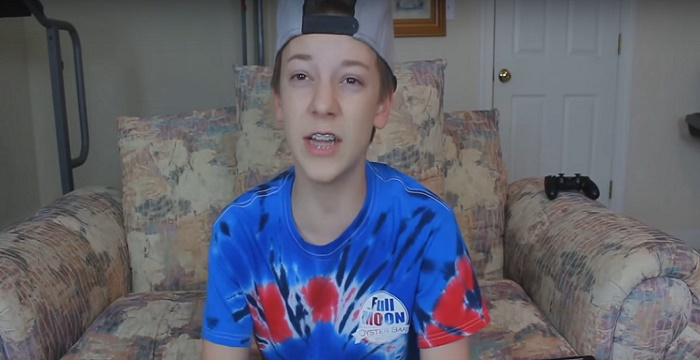- Social Media Influencer Slammed For Using Facetune Before And After Photos
- Social Media Influencer Slammed For Using Facetune Before And After Photo
- Social Media Influencer Slammed For Using Facetune Before And After Video
- Social Media Influencer Slammed For Using Facetune Before And After Pictures
- An influencer’s ‘surprise’ engagement was blasted by users online over a leaked sponsorship pitch deck. An Instagram star has been slammed for tagging a swimsuit brand in a recent post.
- In the age of coronavirus, Americans are editing and posting more content on social media than ever before. As social distancing drives people to avoid trips to the beautician, forgo events with.
When Hurricane Katrina ravaged the U.S. Gulf Coast in 2005, Facebook was the new kid on the block. There was no Twitter for news updates, and the iPhone was not yet on the scene. By the time Hurricane Sandy slammed the eastern seaboard last year, social media had become an integral part of disaster response, filling the void in areas where cell phone service was lost while millions of Americans looked to resources including Twitter and Facebook to keep informed, locate loved ones, notify authorities and express support. Gone are the days of one-way communication where only official sources provide bulletins on disaster news.
Researchers have now started publishing data on the use of social media in disasters, and lawmakers and security experts have begun to assess how emergency management can best adapt. “The convergence of social networks and mobile has thrown the old response playbook out the window,” Michael Beckerman, president and CEO of the Internet Association, told the House Subcommittee on Emergency Preparedness, Response, and Communicationson June 4.
Use these social media stats to get better insights into the world of social media, and how you can maximize your results using these tools. Summary: Social Media Statistics. Here’s a summary of the Social Media Statistics for 2021: There are currently 3.78 billion social media users worldwide. Facebook is the most popular social media platform.
The new playbook will not do away with the emergency broadcast system and other government efforts. Rather, it will incorporate new data from researchers, federal agencies and nonprofits that have begun to reveal the exact penetration of social media in disasters.
The Federal Emergency Management Agency (FEMA) wrote in its 2013 National Preparedness report last week that during and immediately following Hurricane Sandy, “users sent more than 20 million Sandy-related Twitter posts, or “tweets,” despite the loss of cell phone service during the peak of the storm.” New Jersey’s largest utility company, PSE&G, said at the subcommittee hearing that during Sandy they staffed up their Twitter feeds and used them to send word about the daily locations of their giant tents and generators. “At one point during the storm, we sent so many tweets to alert customers, we exceeded the [number] of tweets allowed per day,” PSE&G’S Jorge Cardenas, vice president of asset management and centralized services, told the subcommittee.
Following the Boston Marathon bombings, onequarter of Americans reportedly looked to Facebook, Twitter and other social networking sites for information, according to The Pew Research Center. The sites also formed a key part of the information cycle: when the Boston Police Department posted its final “CAPTURED!!!” tweet of the manhunt, more than 140,000 people retweeted it. Community members via a simple Google document offered strangers lodging, food or a hot shower when roads and hotels were closed. Google also adapted its Person Finder from previous use with natural disasters.
Social Media Influencer Slammed For Using Facetune Before And After Photos
Each disaster sparks its own complex web of fast-paced information exchange. That’s a good thing, says Mark Keim, associate director for science in the Office of Environmental Health Emergencies at the U.S. Centers for Disease Control and Prevention (CDC), it can both improve disaster response and allow affected populations to take control of their situation as well as feel empowered.
Drawing up an effective social media strategy and tweaking it to fit an emergency, however, is a crucial part of preparedness planning, says disaster sociologist Jeannette Sutton, a senior research scientist at the University of Colorado at Colorado Springs who studies social media in crises and disaster. For the Boston Marathon incident, she found no consistent hashtag on Twitter, which can make tracking relevant information difficult. Even searching for the word “Boston” may fall short, she says, because it could lead to unrelated matter like Boston tourism or fail to capture relevant tweets that did not include the word Boston.
As part of disaster preparedness, she says, it would be useful to teach the public how to use social media effectively, how to get information from the Web and also how to put out useful information. “Tweets flow so quickly it’s like a fire hose where you’re trying to extract bits of information that are relevant.”

All the fast-paced information available via social media does pose inherent risks when navigating emergency situations. One is the rapid spread of misinformation—as was the case after the Boston bombings with the identification of a missing man as a possible suspect. Although mistakes often get fixed via the “Wikipedia effect,” in which other users correct the errors, Sutton notes that false information can easily go viral. Rumor Control, run by FEMA, attempts to nip misinformation in the bud, but in general there are no clear lines about who has responsibility to police social media information or how—or even if—that would work.

Another key risk is scammers using social media to steal cash. Whereas the American Red Cross proved that new technologies can efficiently raise money for humanitarian assistance, generating more than $5 million via text message donations in the 48 hours following the Haiti earthquake in 2010, the FBI has warned that social media can also be a lucrative platform for scam artists that crop up in the wake of tragedy.After the Newtown, Conn., school shooting, for example, the FBI arrested a woman who allegedly claimed to be the relative of a dead victim and solicited money via Facebook and other sources.
The Haiti earthquake is often pointed to as the watershed moment that changed how social media is used in disasters. Social media was independently evolving in the years leading up to 2010, but the size and inherent emotional appeal of that disaster created the right environment for it to flourish, says CDC’s Keim. “I think what we’re seeing now is the beginning of an age where its very difficult to predict what will be the next outlet [in disasters],” he says. “These things are spontaneous and meet unique needs in the same way that you couldn’t predict what app on your smartphone you may need or want in the next year.”
Facetune2 is the #1 selfie editing app in the world, used by over 100 million worldwide. Smooth skin, whiten teeth, swipe away blemishes, contour features, add makeup, better than any other selfie app out there. With so many fun & powerful retouching tools, you’ll feel great about every photo you post.
With Facetune2, you’ll never wonder how to take a good selfie again.
Facetune Video is the first video editing app designed specifically for retouching selfie videos. All your fave Facetune features are now available for video: smooth skin, whiten teeth, shape and contour facial features, add makeup and more. Creating an amazing selfie video is now easier than it’s ever been before. Facetune your videos, the same way you Facetune your photos!
Social Media Influencer Slammed For Using Facetune Before And After Photo
Filtertune is a new kind of filter app for photo editing and filter sharing. Looking for the perfect filters?
Want to create and share your own presets?
Use Filtertune’s professional editing tools to create, edit, share and collect filters that make every photo look beautiful.
Match the style of influencers who inspire you by scanning and downloading their filters, or share your signature look for your followers to use and get one step closer to Instagram fame!
Seen is a story maker app for trendsetters, complete with unique layouts, gorgeous transitions, fun stickers, GIFs, and more. Whether you’re an influencer or all about posting stylish social content, with Seen you’ll get everything you need to impress your friends and followers. Tell your Story with Seen.
How to strike the perfect selfie pose every time for the ultimate pic?
When does your makeup expire and why should you stop acting like it doesn’t?

Can a coffee addict like you get whiter teeth?
Social Media Influencer Slammed For Using Facetune Before And After Video
Visit A Social Life.
Social Media Influencer Slammed For Using Facetune Before And After Pictures
A no b-s blog by Team Facetune. Packed with real lifestyle, beauty & social media advice.